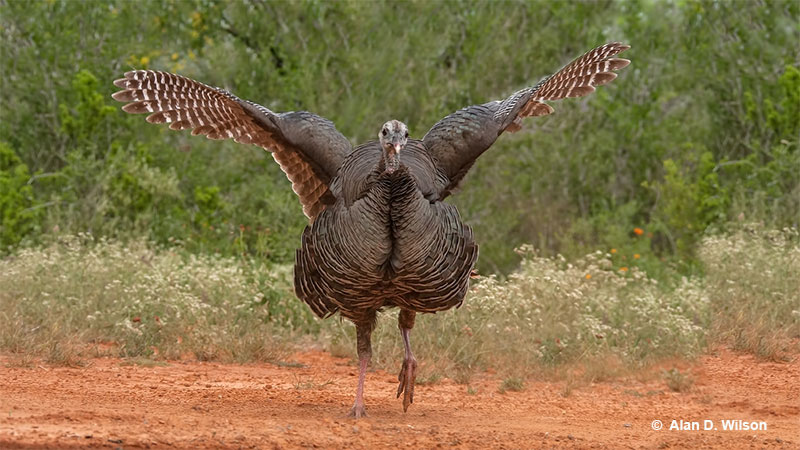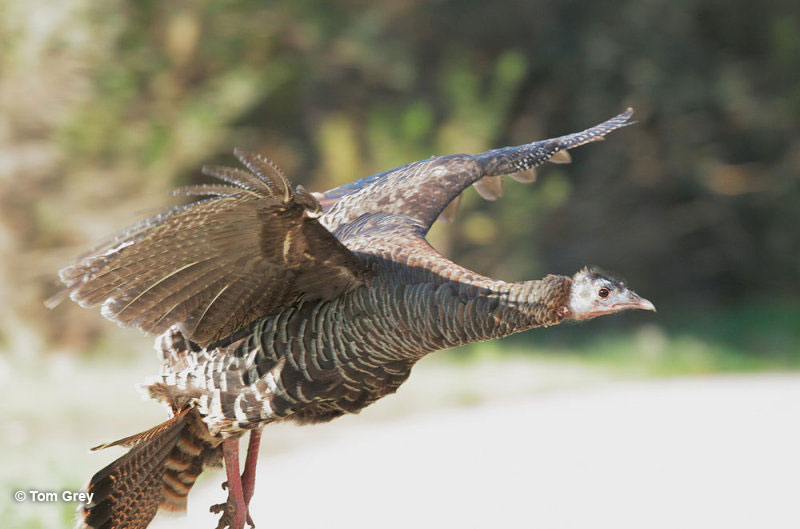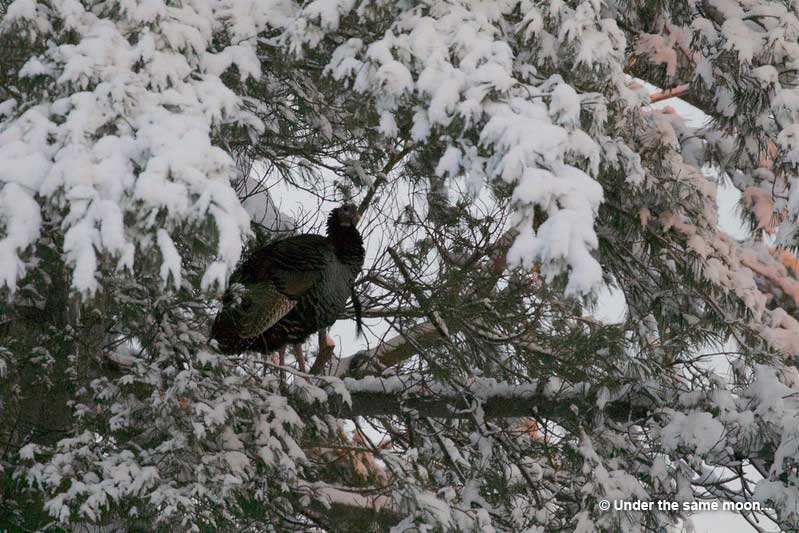
Turkeys don’t seem like wild birds. We are so used to seeing gobblers on farms and on the Thanksgiving table, it can be hard to remember that turkeys are wild birds, too.
With that in mind, it’s also hard to imagine these big heavy birds taking flight. However, they do have wings and yes, Wild Turkeys can indeed fly!
When do turkeys fly? Can they fly for long? See this article to learn answers to these questions and more about flying turkeys!
On this page
Can Turkeys Actually Fly?
Turkeys can certainly fly. Even so, they are very terrestrial birds that much prefer to run.
We usually see these big, unique birds foraging in farm fields, walking, or using their legs to move through the forest understory.
However, when they need to, Wild Turkeys can also fly. As with any bird, Turkeys take to the air to escape predators. If a turkey notices a Bobcat coming a bit too close for comfort, the big bird might burst into the air and fly as fast and far as it can.
It will do the same if the bird feels that it has to quickly escape from a person. When flying like this, Wild Turkeys usually flutter up into the nearest tree.
Turkeys can’t stay in the air for too long, so they have to find a good perch as soon as possible.
They also fly up into trees to pass the night. Since it’s risky for turkeys to sleep on the ground, they much prefer to roost high above any danger.
Wild Turkeys can also fly if they feel vulnerable. Even if they don’t see a predator, a turkey in a wide open field might take to the air and glide to cover instead of running there.
Can Domesticated Turkeys Fly?
At first, young domesticated turkeys have some flight capabilities. Before they have fully developed into adult birds, they can flutter to the top of hay bales, barn rafters, or other perches. However, these young birds can’t usually fly as high or as long as Wild Turkeys.
Even though they are still light and slender enough to fly a little bit, their breast muscles still tend to be a bit too large for long, sustained flight.
Unlike Wild Turkeys, domesticated turkeys have been selectively bred to be eaten and thus have a lot more breast muscle mass.
Although this gives them strong breast muscles, and these are used for flight, they end up reducing the turkey’s ability to flap its wings. At some point, the bird just can’t flap its wings fast enough to fly into the air.
Read more: Fun facts about turkeys
The other main reason adult domesticated turkeys can’t fly is because of their weight; a major flight factor for any bird. No matter what the species, if a bird passes a certain weight threshold, it just won’t be able to generate enough flight power to lift itself off the ground.
Since domesticated turkeys are purposely bred to be heavy, adults quickly become flightless.
Fun Facts About Turkeys & Their Flight

- Wild Turkeys might not fly that much, but when they do, they can move surprisingly fast. For short periods, these heavy birds can reach speeds of 55 miles per hour!
- Turkeys usually fly by taking a few quick steps and bursting into the air with quickly beating wings. After several wingbeats, they glide through the air for dozens of feet.
- In emergencies, these big birds can also suddenly and quickly fly into the air from a standing position.
- Wild Turkeys begin to fly when they are four or five weeks of age.
- Turkeys fly on long, rounded wings. Their wingspan can nearly reach five feet!
- Turkeys can glide through the air but they can’t soar. For this reason, we don’t see them circling and soaring high above forests and fields.
- Wild Turkeys often fly together in flocks. When moving between feeding and roosting areas, several can be seen flying at the same time.
Frequently Asked Questions
How far can turkeys fly?
Turkeys can’t fly very far, they can usually fly as far as a quarter of a mile.
How fast can turkeys fly?
Turkeys can fly as fast as 55 miles per hour.
Do turkeys migrate?
No, turkeys do not migrate.


